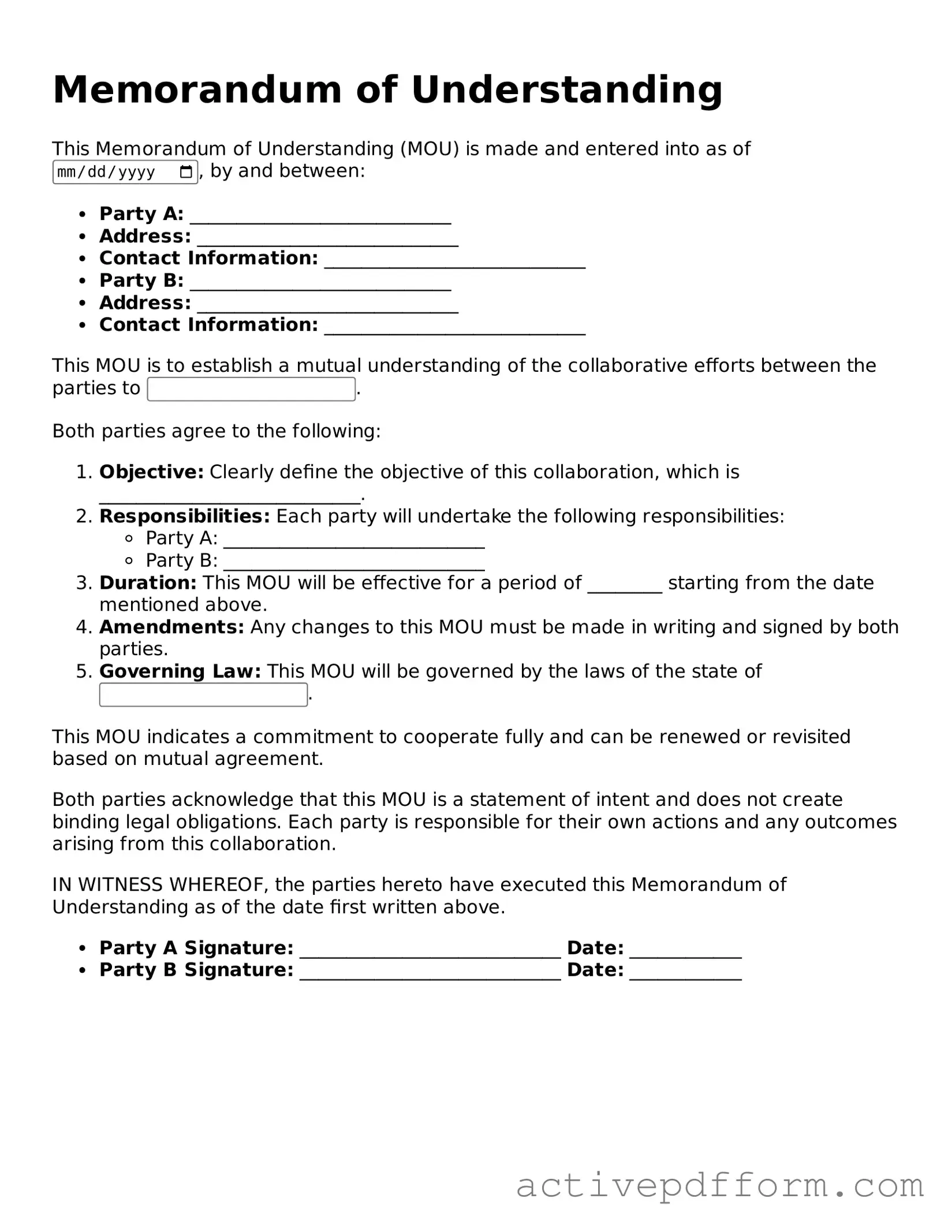What is a Memorandum of Understanding (MOU)?
A Memorandum of Understanding, or MOU, is a document that outlines an agreement between two or more parties. It serves as a formal way to express mutual intentions and understandings regarding a specific project, partnership, or collaboration. While it is not legally binding like a contract, it helps clarify the roles, responsibilities, and expectations of each party involved.
When should I use an MOU?
An MOU is useful in various situations, especially when parties wish to establish a clear understanding without entering into a legally binding contract. Common scenarios include collaborations between organizations, partnerships in community projects, or agreements in research initiatives. If parties want to outline their intentions and framework for cooperation while keeping things flexible, an MOU is a suitable choice.
What should be included in an MOU?
An effective MOU should include several key components. Start with the names of the parties involved and the purpose of the agreement. Clearly define the roles and responsibilities of each party. It’s also important to outline the duration of the MOU, any financial commitments, and how disputes will be resolved. Finally, include a section on confidentiality, if applicable, to protect sensitive information.
Is an MOU legally binding?
Generally, an MOU is not considered a legally binding document. It reflects the intentions of the parties but does not impose legal obligations like a formal contract. However, some elements of an MOU can be enforceable if they meet certain legal criteria. It’s wise to consult with a legal professional if there are concerns about the binding nature of specific terms within the MOU.
How do I create an MOU?
Creating an MOU involves several steps. First, gather all parties involved and discuss the terms and goals of the agreement. Next, draft the document by including all necessary components, such as the purpose, roles, and responsibilities. Once the draft is complete, share it with all parties for review and feedback. Finally, once everyone agrees on the terms, have all parties sign the MOU to indicate their understanding and acceptance.
